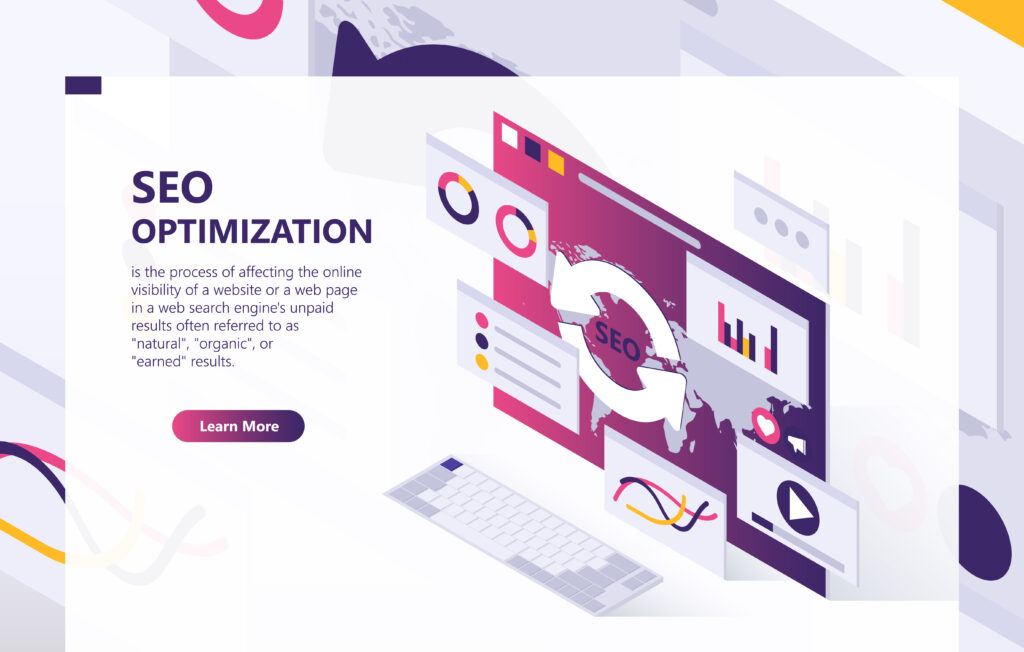Introduction
Search Engine Optimization (SEO) is an essential practice for anyone looking to improve their website’s visibility and performance in search engine results. Effective on-page SEO ensures that your site is understandable not just to search engines but also to visitors, enhancing both user experience and rankings. This beginner’s guide to on-page optimization will cover the fundamental strategies and steps to equip you with the skills needed to optimize your web pages effectively.
On-page SEO involves optimizing various elements of your website that affect your search engine rankings. It’s about everything from the quality of your content to the optimization of your headlines and HTML tags. By the end of this guide, you will understand the critical components of on-page optimization and how to apply them to your website to boost your performance in search results.

Understanding SEO and On-Byte Bump Optimization
SEO, or Search Engine Optimization, is a methodology of strategies, techniques, and tactics used to increase the number of visitors to a website by obtaining a high-ranking placement in the search results page of a search engine (SERP). On-page SEO specifically refers to optimizing the content and structure of website pages to improve their ranking in search engine results pages and attract more relevant traffic.
On-page optimization is crucial because it tells search engines what your website and your individual pages are about and whether they are relevant to a searcher’s query. Through the strategic placement of optimized content, meta tags, and other elements, you help search engines index your pages better and improve the likelihood of ranking higher in search results.
Keyword Research
Keyword research is foundational in SEO as it informs you of what your target audience is searching for and the keywords you should aim to rank for. It involves identifying popular words and phrases people enter into search engines. Understanding these specific keywords helps tailor your content to meet the demands of your audience and increase its relevance to those search queries.
When conducting keyword posts, it’s important to focus on relevance, search volume, and competition levels. Tools like Google Keyword Planner, Ahrefs, or SEMrush can provide insights into the keywords’ potential traffic and competitiveness. Start with broad terms related to your topics and refine them to more specific keywords or long-tail keywords that can attract more targeted traffic.
Content optmization
Content is king in the world of SEO. High-quality, engaging content tailored to your audience can improve your site’s relevance and authority, as well as increase its time on site and decrease bounce rates. When creating content, make sure it is well-researched, provides value, and incorporates the keywords identified in your research naturally.
In addition to quality, the structure of your content plays a significant role in on-page optimization. Use headers and subheaders to organize your content effectively. This not only makes your content easier to read but also helps search engines understand the main topics of your page, which can improve your rankings. Remember, good content fulfills a need; it answers users’ questions and engages them in a meaningful way.

Meta Tags and Descriptions
Meta tags and descriptions play a pivotal role in SEO. They provide search engines with metadata about the contents of the page, which can influence your rankings and the way your pages are displayed in search results. Well-crafted meta descriptions can also improve click-through rates from the search results page.
When writing meta tags, focus on including the targeted keywords for each page. Keep your meta descriptions brief, clear, and relevant. They should offer a concise explanation of what the page is about and why someone should click on it. Although meta descriptions themselves don’t directly influence rankings, a well-written meta description can entice users to choose your link over others in the results, which increases your organic traffic.
URL Structure
An effective URL structure can help both users and search engines navigate your site more easily. A good URL should be easy to understand and include words that describe the content of the page. This clarity not only helps users remember the URL but also better aligns with the search queries that might be used to find your content.
Keep URLs short, relevant, and devoid of unnecessary parameters. Use hyphens to separate words, making them easier to read and more user-friendly. Consistent, logical URL structures not only help manage your site but also improve your URL’s ranking potential in search engines.
Image Optimization
Images are integral to enhancing the user experience on websites, but they can also contribute to site performance issues if not properly optimized. Optimizing images involves compressing them without losing quality to decrease page load times, which is crucial for SEO. Additionally, you should use appropriate alt tags for all images, as alt tags provide search engines with context to the images, improving the accessibility of your site and its ranking.
When naming image files, be descriptive and keyword-rich. This not only improves SEO but also helps in cases where the image file is linked directly. Utilizing tools like Adobe Photoshop or free online tools like TinyPNG can help reduce file sizes without compromising image quality, ensuring faster loading times and a better user experience.
Internal Linking
Internal linking refers to the practice of linking to other pages on your website. It is crucial for SEO as it helps spread link equity (value passed from one site to another site), aids in website navigation, and helps to establish information hierarchy and spread page authority throughout your site. Make sure every page on your site is reachable from at least one static text link.
A robust internal linking strategy can lead users to discover more content on your site, thus increasing the session duration and reducing bounce rates. It’s essential to use clear and descriptive anchor text for the links. This improves the relevance of connected pages, enhancing your site’s credibility and efficiency in user and search engine eyes.
Mobile Optimization
With the majority of users now accessing the internet via mobile devices, mobile optimization has become critical. A mobile-friendly website notices better user engagement and has a higher chance of ranking well in search results. Responsive design ensures that your site adapts to fit the screen of any device, providing a good user experience everywhere.
Google’s Mobile-Friendly Test can help you see if your page meets mobile standards. Additionally, consider the visibility and accessibility of interactive elements on small screens and optimize your site’s navigation and content layout according to mobile usage patterns. Remember, effective mobile optimization goes beyond shrinking your site to fit into a smaller screen, encompassing the overall structure, loading speed, and navigability.
Page Speed Optimization
Page speed is a direct ranking factor, as confirmed by Google. Faster pages lead to a better user experience. To optimize your site’s speed, start by compressing images and minifying CSS and JavaScript. You can also improve response times by using browser caching and a reliable content delivery network (CDN).
Tools such as Google’s PageSpeed Insights provide valuable insights into how well your site loads and offer specific recommendations for improvement. Implementing these can significantly impact your site’s performance, affecting not only user satisfaction but also your site’s ability to compete in search rankings.
Technical SEO Elements
Technical SEO involves optimizing the infrastructure of your site so that search engines can crawl and index it more effectively. Key elements include a secure connection, a responsive design, and a structured data setup. Ensuring that your site is accessible and indexable is the cornerstone of your technical SEO efforts.
Regular audits can help you understand if there are any underlying problems that prevent your pages from ranking well. Tools like Screaming Frog SEO Spider and Google Search Console can help detect and fix common technical issues, such as duplicate content or broken links, ensuring your SEO foundation is strong and your site is set up for success.
Conclusion
Starting with on-page SEO is a vital step for any beginner looking to improve their site’s performance in search engines. By understanding and implementing the fundamentals discussed in this guide, you can lay a solid foundation for more advanced SEO strategies. Remember, SEO is a long-term investment, and while results don’t happen overnight, the benefits of maintaining a well-optimized site are undeniable. Stay committed to the process, and you will see your efforts pay off in improved rankings and increased traffic.
The post SEO Fundamentals: The Beginner’s Guide to On-Page Optimization appeared first on BlogThemeMachine.

